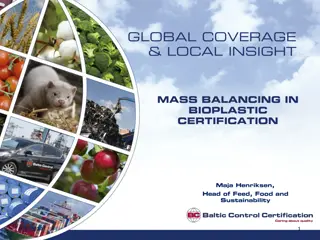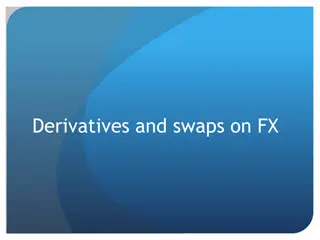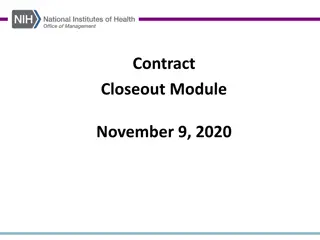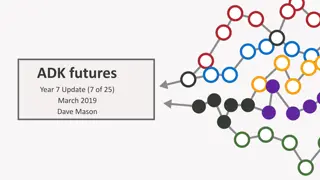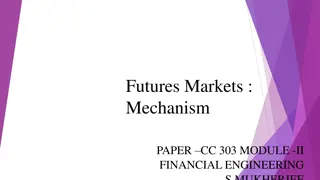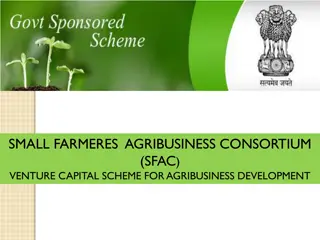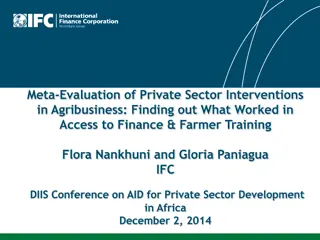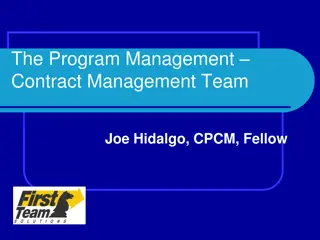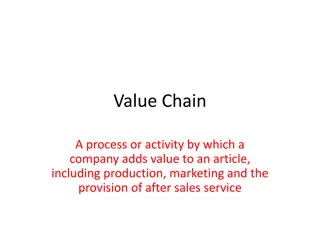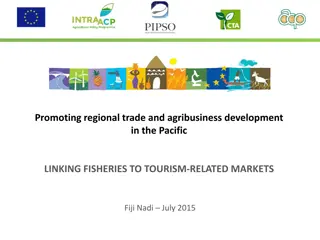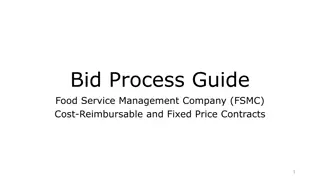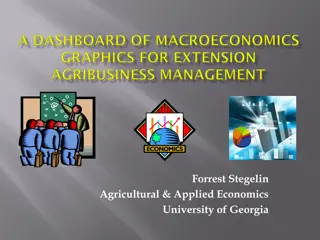Innovative CPC Futures Contract Program for Agribusiness Sustainability
The Commodity Plus Carbon (CPC) Futures Contract Program integrates agricultural commodity prices with carbon valuation to incentivize good agricultural practices and reduce carbon footprint. By combining ag commodity prices with carbon reductions, CPC contracts offer hedging opportunities and incentives for sustainable farming practices. The program involves data collection, verification, and evaluation processes to determine carbon reductions below established benchmarks, leading to premium prices for CPC contracts. A six-year stress test showcases the resilience and potential benefits of CPC spreads over traditional prices, offering direct revenue generation and minimal transaction costs for growers and buyers. CPC also provides supply-side benefits for various stakeholders in the agricultural value chain.
Download Presentation

Please find below an Image/Link to download the presentation.
The content on the website is provided AS IS for your information and personal use only. It may not be sold, licensed, or shared on other websites without obtaining consent from the author.If you encounter any issues during the download, it is possible that the publisher has removed the file from their server.
You are allowed to download the files provided on this website for personal or commercial use, subject to the condition that they are used lawfully. All files are the property of their respective owners.
The content on the website is provided AS IS for your information and personal use only. It may not be sold, licensed, or shared on other websites without obtaining consent from the author.
E N D
Presentation Transcript
Commodity Plus Carbon (CPC) Futures Contract Program
CPC Solution CPC futures contracts generate ag premium prices from carbon emissions reductions Each CPC crop or ag product futures contract combines: 75% ag commodity price 25% carbon price valuation based on level of carbon reduction below benchmark CPC contracts incentivize GAP (good agricultural practices), create hedging opportunities, and Scopes 1, 2, and 3 footprint values for buyers. Can be based off single load, entire field, or segmented field growth
Process Data Collection Verification Evaluation Pricing Protection Emission reduction data (Satellite, Fieldview, TopCon, Other) Authentication / verification according to Carbon Registry Protocol Emissions reductions measured against pre-established benchmark Emissions reductions below benchmark factored into CPC premium All data is secured via blockchain technology
Six Year Stress Test CPC spreads over cash/basis prices Scenario 1: Current Carbon Credit (CC) Prices CPC Corn: +238%, CME Corn: +102% Scenario 2: Lower CC Prices (25% annual decline) CPC Corn: +115%, CME Corn: +39% Scenario 3: Stable CC Prices (2% annual growth) CPC Corn: +164%, CME Corn: +71% Scenario 4: Higher CC Prices (25% annual growth) CPC Corn: +213%, CME Corn: +103%
Existing Solutions vs CPC Carbon Inset Strategy CPC allows direct revenue generation from built-in carbon emission reduction premiums First- adapter advantages Minimal transaction cost to growers and buyers Limited liability and flexible participation 80% Favorable Grower polling response rate Green bonds/securities or ESG impact funds / private equity financing Private sector carbon credit allowances/ trading programs Direct farm payments for carbon emissions reduction under long- term contracts
CPC Supply-Side Benefits Grower: premium cash/basis on crops Insurer: Maximize Scope 1, 2, and 3 benefits with insurance on CPC-eligible crops Elevator: Scope 1, 2, and 3 direct and indirect premiums in re-sale of CPC deliveries to buyers, premium hedging Ethanol/CPG Processors: Scope and lower carbon footprint evaluations
Buyer Benefits Scope 1, 2, 3 benefits imputed discounts to buyers Mass Balance sourcing methodology certifying CPC crop deliveries Scope benefits Enables lower carbon footprint branding Importer verification for foreign national/ regional carbon reduction standards
FAQ How are carbon emissions tracked? Data authentication and protocol verification procedures Blockchain use enables the tracking of all relevant crop attributes from farm to fork Mass balance certification for sourcing CPC and co-mingled corn/soybeans/other bull commodities The industry is slow to adapt why be ahead of the curve? Early adopters will be able to capture low carbon credit prices before they increase Demand for climate friendly grain exists largely unaddressed Mitigate erosion of export market share by failure to meet foreign buyer carbon reduction requirements


